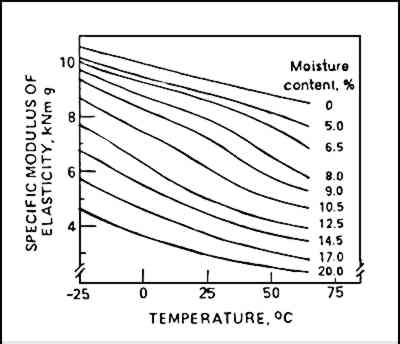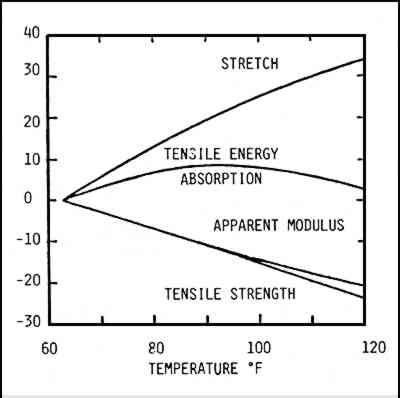PAPER COMPLEXITY AND THE INTERPRETATION OF CONSERVATION RESEARCHAntoinette Dwan
4 MOISTURE-TEMPERATURE RELATIONSHIPSCROOK AND BENNETT comprehensively studied the effects of humidity and temperature on the physical properties of paper. They investigated the effects on eleven different properties of fourteen different papers. Their conclusions are based on 100,000 individual test results. In the summary of their investigation they state:
The degree of elastic or viscoelastic properties in a paper depends largely on environmental conditions of moisture and temperature. There is a well defined transition zone between elastic (“glass-like”) and viscoelastic behavior. It is defined by the glass-transition temperature or “Tg.” Below the Tg temperature, dry cellulose will behave as an elastic material, and above its Tg, it will exhibit viscoelastic behavior. For dry cellulose, these temperatures are: cellulose 240�C, hemicellulose 190�C, and lignin 150�C.16 Moisture absorption causes a lowering of the Tg of cellulose. This results in plasticization of cellulose because elastic properties are converted to viscoelastic (plastic or flow) properties. Consequently, mechanical and other physical properties are greatly affected. Elasticity is significantly affected by temperature. Change in elastic modulus as a function of temperature and moisture content for one paper is shown in Figure 9.
Temperature changes also alter other physical properties. Crook and Bennett demonstrated a 5% change in test values for fold, tensile, stretch, burst, and dynamic tensile with a temperature change from 60�F to 75�F and constant relative humidity.18Figure 10 shows the results of four physical tests taken in both machine and cross directions. Measurements were made at 63�, 91�, and 120�F. Changes in physical properties were 25%, 35%, and 20% respectively. A 6% change was noted for a change of temperature from 69.5� to 76.5�F. Due to the importance of temperature on testing paper properties, Wink recommended temperature control be tightened to (23�C � 2�C).19
When reviewing research data, the paper-temperature relationship should be considered when evaluating the magnitude and possible sources of changes in data values. |

